Baillon´s Crake, Kleinst Waterhoen, Zwergsumpfhuhn, Franga-d’água-pequena, Polluela Chica
Spotted in the Alentejo region of Portugal today. Baillon´s Crake sound
The Baillon’s Crake (Porzana pusilla) is a very small waterbird of the family Rallidae.
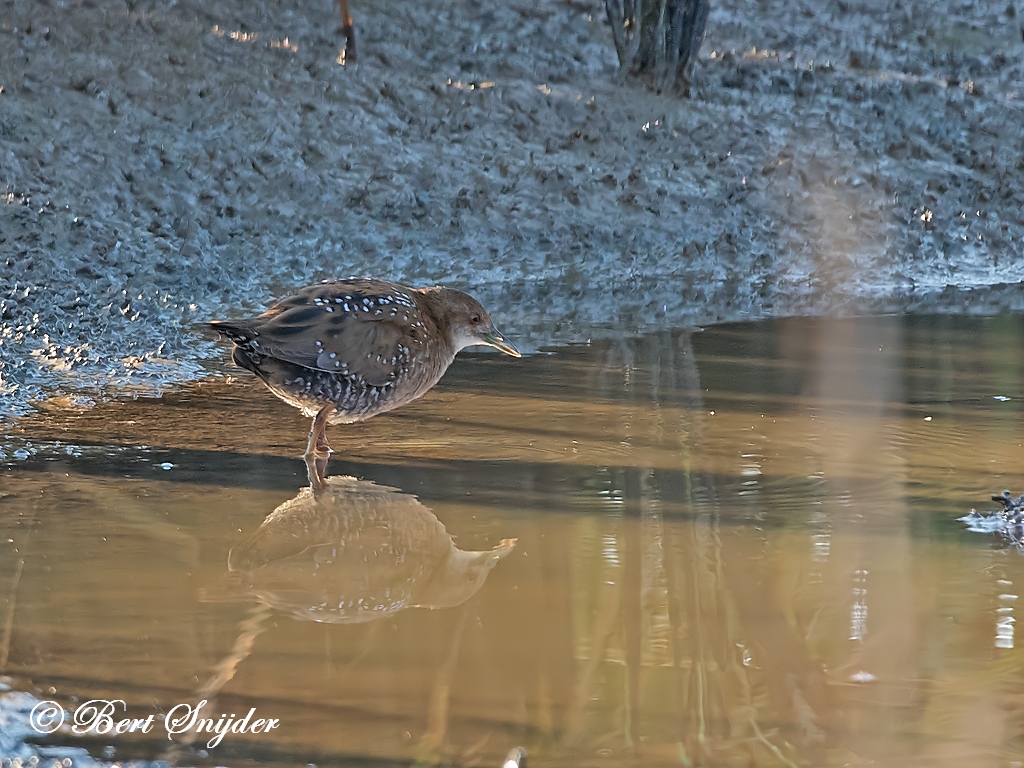
More photos at the bottom of this page:
Their breeding habitat is sedge beds in Europe, mainly in the east, and across Asia. They used to breed in Great Britain up to the mid-19th century, but the western European population declined through drainage. There has been a recovery in north-western Europe in recent years, with the recolonisation of Germany and the Netherlands, and breeding suspected in Britain; an Irish record in 2012 was the first there since the 1850s. They nest in a dry location in wet sedge bogs, laying 4–8 eggs. This species is migratory, wintering in east Africa and south Asia.
It is also a resident breeder in Africa and Australasia. There is a single North American record of this species on Attu Island in September 2000.
They are 16–18 cm (6.3–7.1 in) in length, and are similar to the only slightly larger Little Crake. Baillon’s Crake has a short straight bill, yellow or green without a red base. Adults have mainly brown upperparts with some white markings, and a blue-grey face and underparts. The rear flanks are barred black and white. They have green legs with long toes, and a short tail which is barred underneath.
Immature Baillon’s Crakes are similar to the adults, but have extensively barred underparts. The downy chicks are black, as with all rails.
These birds probe with their bill in mud or shallow water, also picking up food by sight. They mainly eat insects and aquatic animals.
Baillon’s Crakes are very secretive in the breeding season, and are then mostly heard rather than seen. They are then noisy birds, with a rattling call like that of the edible frog, or perhaps garganey. They can be easier to see on migration or when wintering.
This bird is named after French naturalist Louis Antoine Francois Baillon. The names Marsh Crake and Tiny Crake have previously been used to refer to this species. The genus name Porzana is derived from Venetian terms for small rails, and pusillus is Latin for “very small”.
The Baillon’s Crake is one of the species to which the Agreement on the Conservation of African-Eurasian Migratory Waterbirds (AEWA) applies.
Baillon’s Crakes are not listed as threatened on the Australian Environment Protection and Biodiversity Conservation Act 1999. However, their conservation status varies from state to state within Australia. For example:
The Baillon’s Crake is listed as threatened on the Victorian Flora and Fauna Guarantee Act (1988). Under this Act, an Action Statement for the recovery and future management of this species has not yet been prepared.
On the 2007 advisory list of threatened vertebrate fauna in Victoria, the Baillon’s Crake is listed as vulnerable.

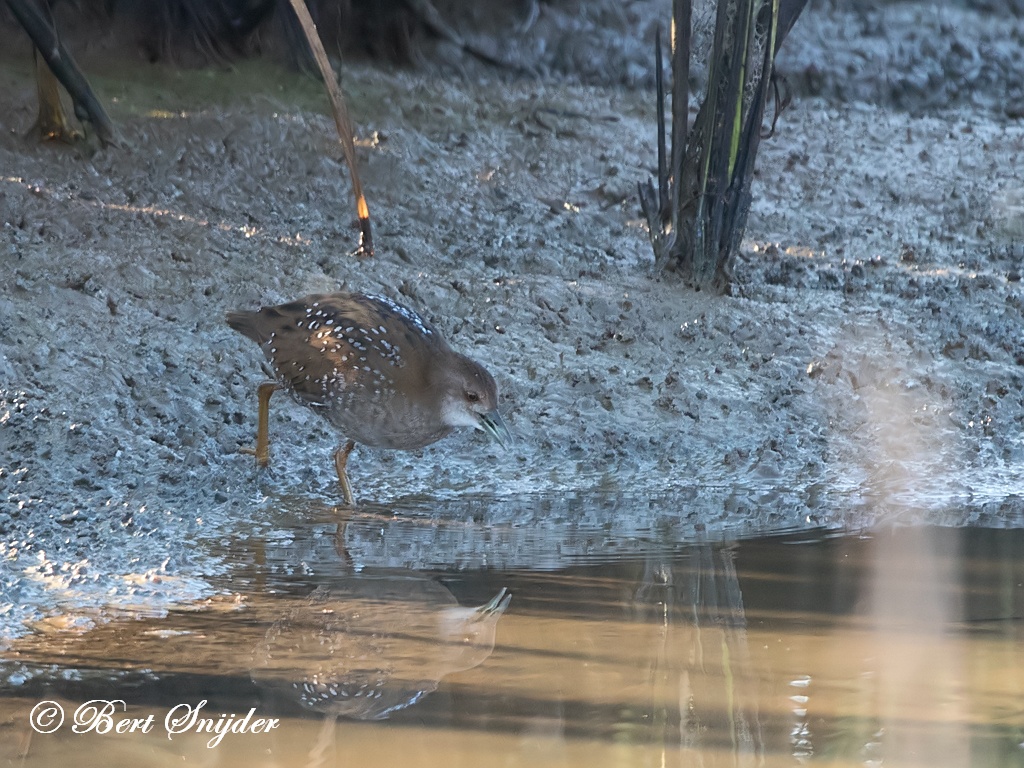
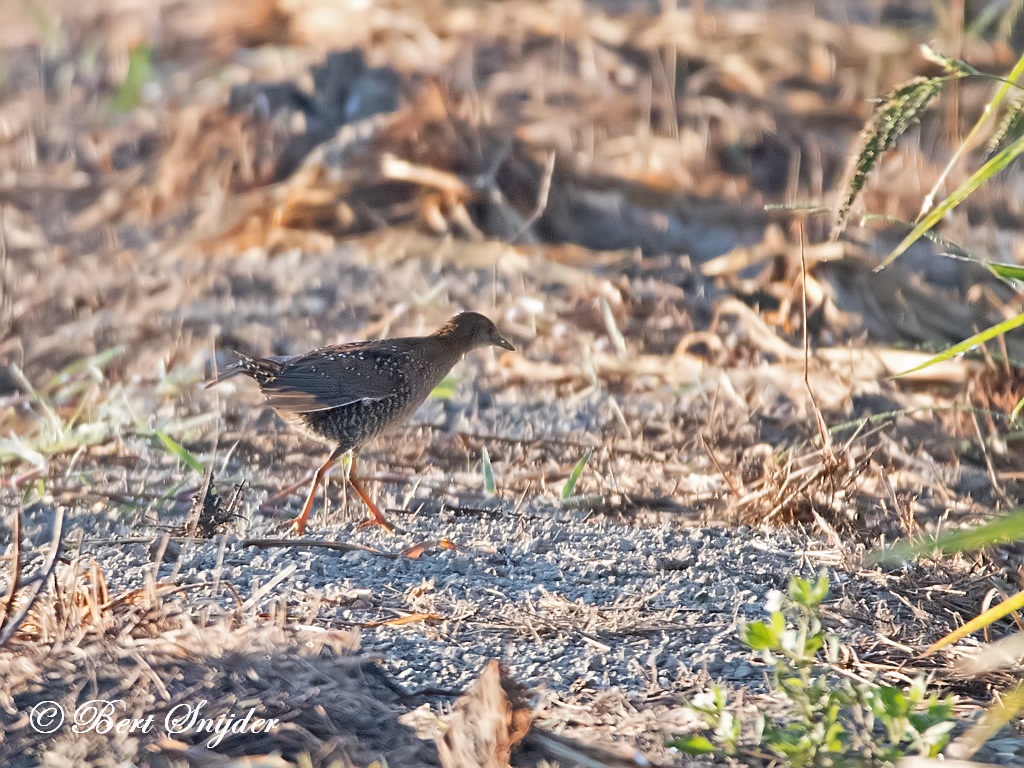
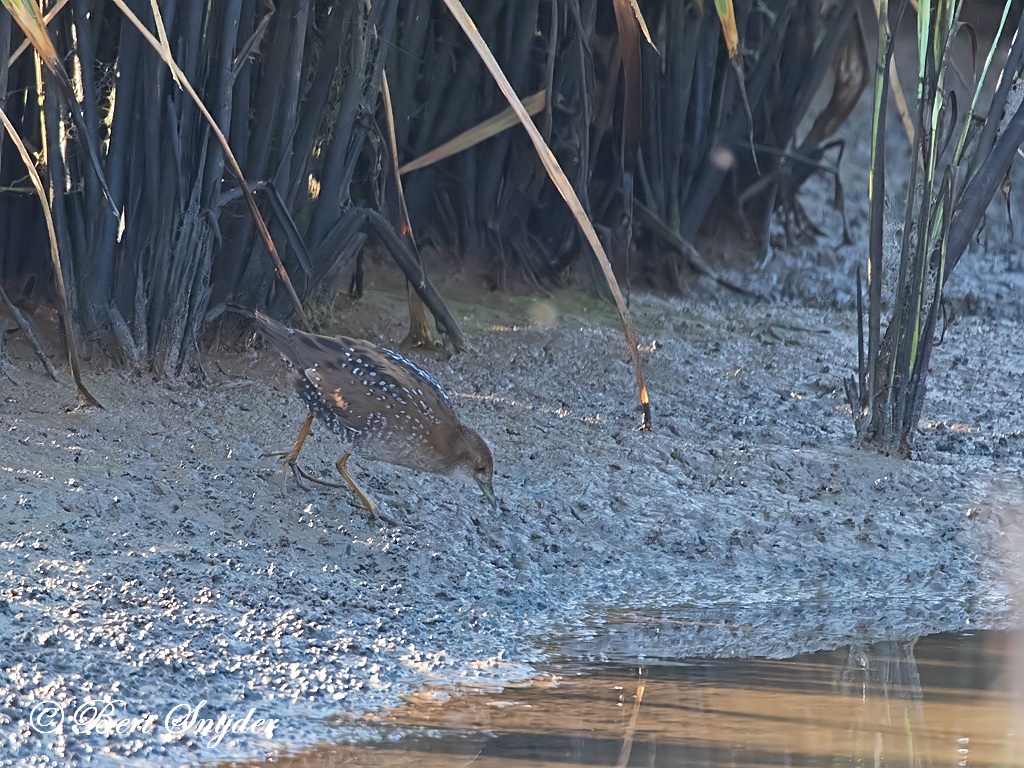
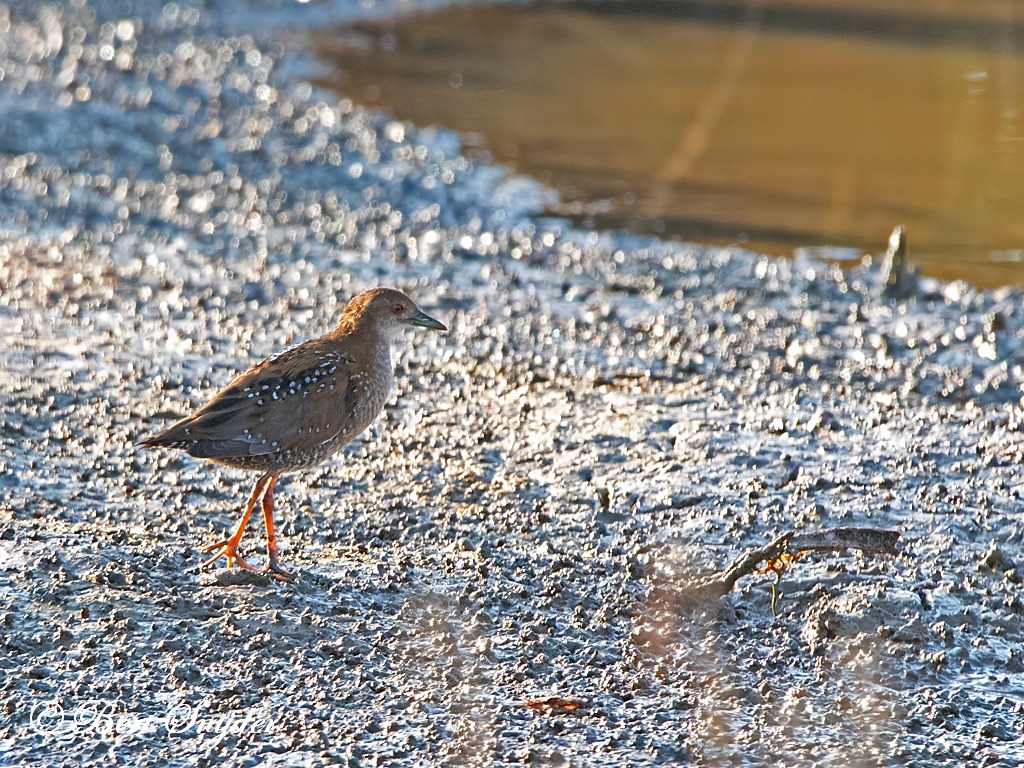
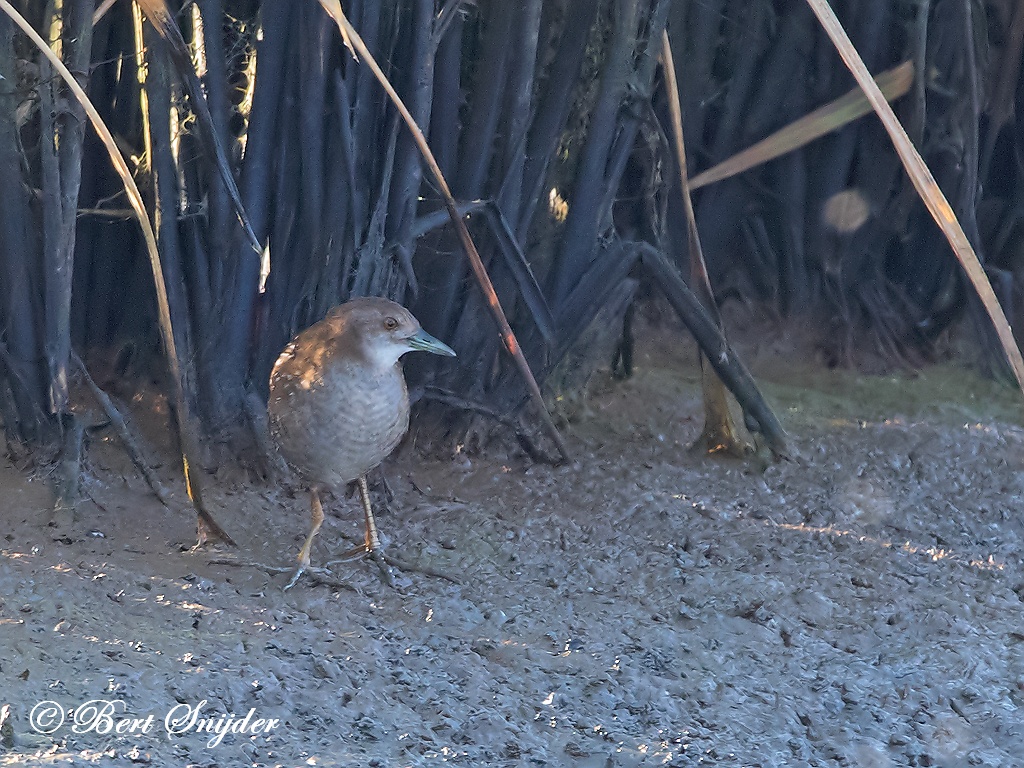
Other synonyms:
Afrikaans: Kleinriethaan
Asturian: Gallineta Nana, Pita Nana
Breton: Ar rakig korr
Catalan: Picardona, Rasclet, Rasclet europeu, Rasclet menut
Catalan (Balears): Rasclet menut
Valencian: Picardona
Czech: chøástal nejmenší, Chrástal nejmenší
Welsh: Rhegen Baillon
Danish: Dværgrørvagtel
German: Zwergralle, Zwergsumpfhuhn
English: African Spotted Crake, Baillons Crake, Baillon’s Crake, Dwarf Rail, Koitareke, Lesser Spotted Crake, Marsh Crake, Pygmy crake, Tiny Crake
English (Kenya): Baillon’s Crake
English (New Zealand): Marsh Crake
Esperanto: pigmea porzano
Spanish: Polluela Chica
Spanish (Spain): Polluela Chica
Estonian: värbhuik
Basque: Rasclet, Uroilanda txiki, Uroilanda txikia
Finnish: Kääpiöhitti, Kääpiöhuitti
Faroese: Dvørgsmetta
French: Marouette de Baillon, Porzane de Baillon, Poule d’eau naine, Râle de Baillon
Irish: Gearr Baillon
Galician: Poliña pequena, Rasclet
Manx: Eean raip beg
Croatian: Mala Štijoka, Štijoka kusica
Hungarian: Törpe vízicsibe, Törpevízicsibe
Indonesian: Burung Tikusan Kaki Kuning, Burung Tikusan Kerdil, Tikusan kaki kuning, Tikusan Kerdil
Icelandic: Dvergrella
Italian: Schiribilla grigiata
Japanese: hime kuina, himekuina, Hime-kuina
Kazakh (Transliteration): tïttey tartar
Korean (Transliteration): soe-tteumbugi
Kwangali: Katukutuku
Latin: Porzana pusilla, Porzana pussila, Zapornia pusilla
Luxembourgish: Zwergrall
Lithuanian: Mažoji švygžda
Latvian: Ceru orman?tis
Malagasy: Birindrano
Maori: Koitareke
Mongolian (Transliteration): byatskhan khanchir
Malay: Burung Sintar Kecil, Sintar Kecil
Maltese: Gallozz tal-Faxxi
Dutch: Dwergwaterral, Kleinst Waterhoen, Kleinste waterhoen
Norwegian: Dvergrikse
Polish: karliczka, karliczka (zwyczajna)
Portuguese: franga d’água pequena, Franga-d’água-pequena
Portuguese (Portugal): Franga-d’água-pequena
Romansh: Pulsauna nanina
Russian: Pogonysh-kroshka
Slovenian: pritlikava tukalica
Shona: Nhapata
Albanian: Porzana e vogël
Serbian: mali barski petlic
Swedish: Dvärgsumphöna
Swahili: Kiluwiri Mdogo
Turkish: Cüce Benekli Suyelvesi
Xhosa: Isazenza
Travel Birdwatching Holiday Alentejo, Vacation Portugal for birders to see birds on your trip.